Whether you’re a seasoned camping enthusiast or you’ve never camped before, there are some essential things you need to know for a comfortable, safe and fun experience. On an Outward Bound course, all of your camping equipment is provided for you and your Instructors will show you how to use it. But if you’re venturing out on your own, here are a few things to keep in mind…
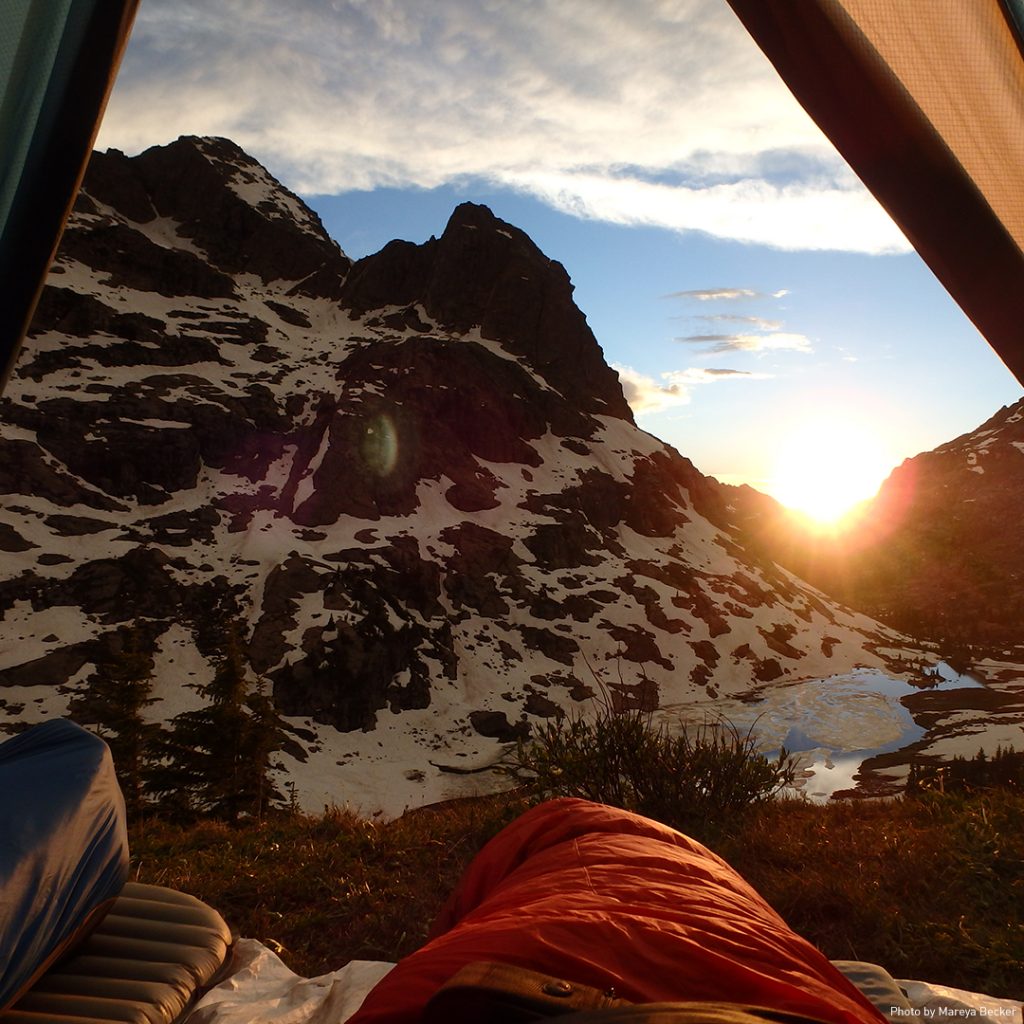
One of the many benefits to camping are the breathtaking views.
Why You May Choose to Not Use Shelter
You’re likely to travel with your own shelter on any outdoor adventure. Some hikers opt for ultra-light tents. Others use tarps, which take up little space and are also lightweight.
But let’s say it’s been beautiful weather, and you’re thinking you would rather not set up your tarp or tent. Think it through before you settle on that choice. Weather in many parts of the country can change quickly, and many a camper has been startled awake by drops of rain on their noses in the middle of the night. If you do opt to sleep under the stars, know exactly where your gear is, as well as your headlamp, and have an idea of where to set it up. Just in case!
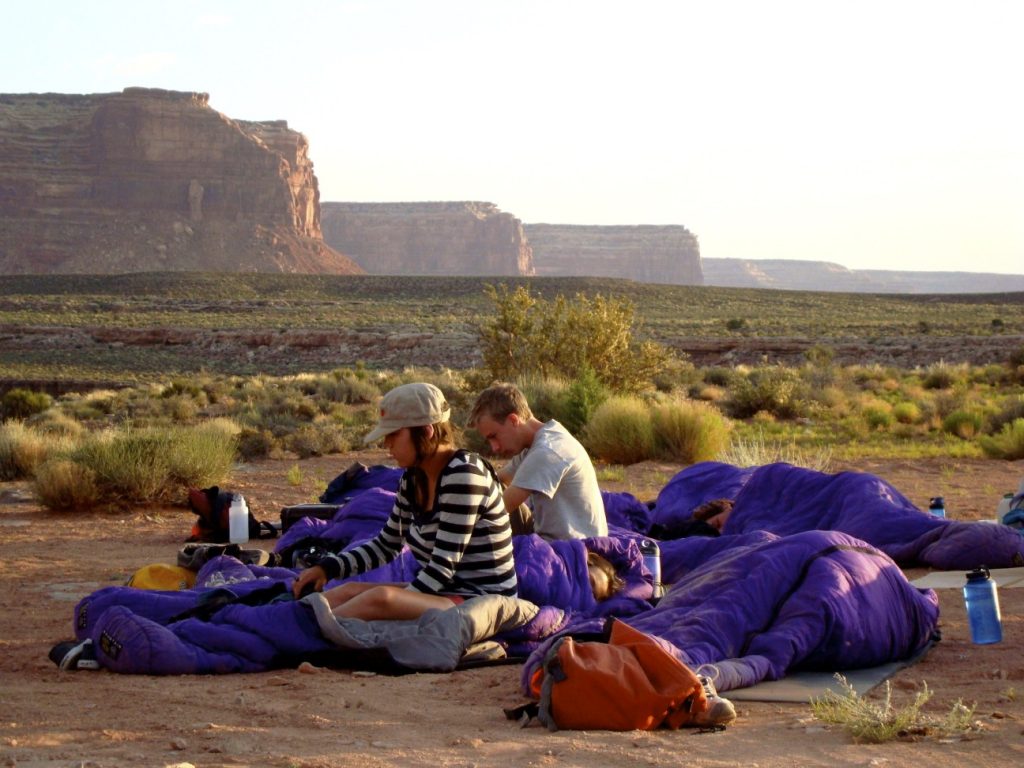
If you do opt to sleep without shelter, know exactly where your gear is, as well as your headlamp, and have an idea of where you’d set it up.
There is an advantage to setting up shelter. Critters are likely to leave you alone. A tarp or tent helps the squirrels, deers and bears know where the humans are so they don’t stumble into your space at night. Read more about setting up a simpler shelter in this blog post.
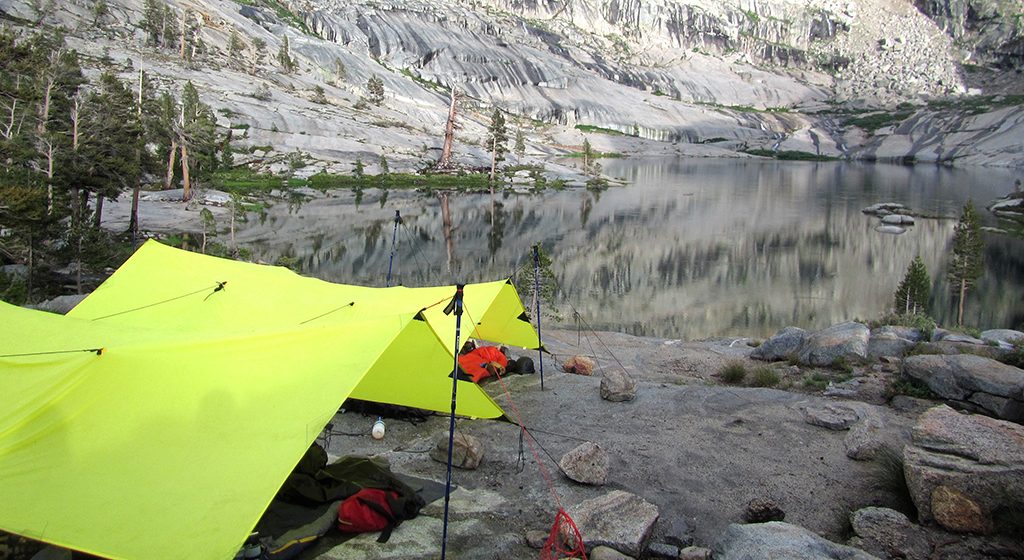
A snug shelter will keep you warm and dry, or at least cover your head, so that you can savor the night sounds and enjoy the simplicity of being out on the trail.
How to Sleep Soundly
A good day’s adventure is also a great backdrop for sound sleep! If you’ve been backpacking or otherwise traveling by your own power, you’re likely to be weary by the end of the day and ready for a good night’s rest. As an Outward Bound Instructor, many of my best nights’ sleep have been outside, camping.
When choosing a sleeping bag, did you know they don’t have to be heavy to keep you warm? You can get one that’s lightweight (important for wilderness travel!) and it will still be durable and effective. Getting a super heavy sleeping bag can result in unwanted weight you have to carry, and extra insulation could make for a bad night’s sleep, making you hot and sweaty at night. Be sure to choose the right one by doing some research beforehand on the weather conditions you’ll face on your trip.
Pro tip, in case you’ve never slept in a sleeping bag before: go in feet first! I once had a student go in head first; they’d never seen a sleeping bag, so how would they know?
A sleeping pad is also helpful for making your nights’ rest more comfortable. If you are backpacking, you’ll need to think about the weight of sleeping pad to save on bulk, so it’s better to go lightweight. A sleeping pad will also insulate you, allowing you to sleep more comfortably.
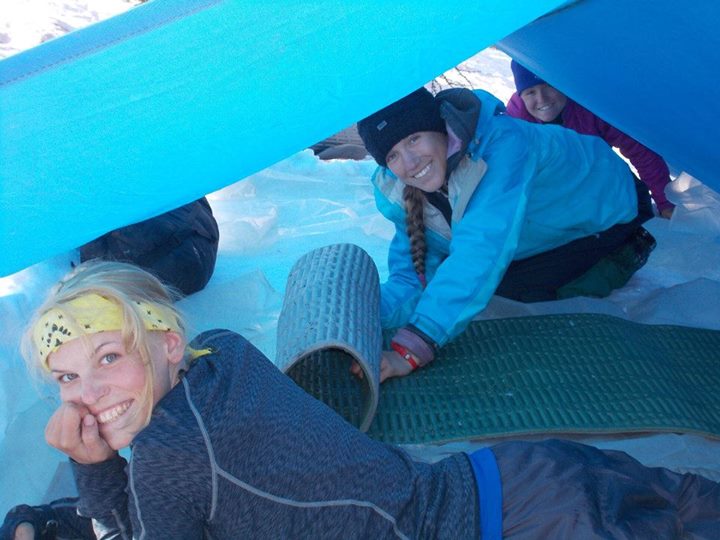
A lightweight sleeping pad is a helpful companion for your camping trip.
And what about layers at night? You may be surprised to learn you don’t have to wear a ton of layers in your sleeping bag to keep warm. The sleeping bag is meant to keep you warm by insulating your body heat, but if you have on lots of layers, that heat gets trapped. It’s more important to make sure your extremities are covered, as you lose more heat through your hands, head and feet.
Where to Store Your Food
It’s important to hang your food up at night. I usually carry a plastic bag and a large stuff sack, as well as a lightweight 50-100’ cord. Before dark, I weight one end of the cord with a rock, toss it high over a strong limb, and hang my food well away from where I’ll be sleeping. After cooking and clean up, I’ll attach the stuff sack to one end of the cord, and tie it off so that it’s at least 10’ high and 10‘ away from a tree trunk. This helps ensure that you’ll have food for the rest of your adventure, and not feed the local bear population.
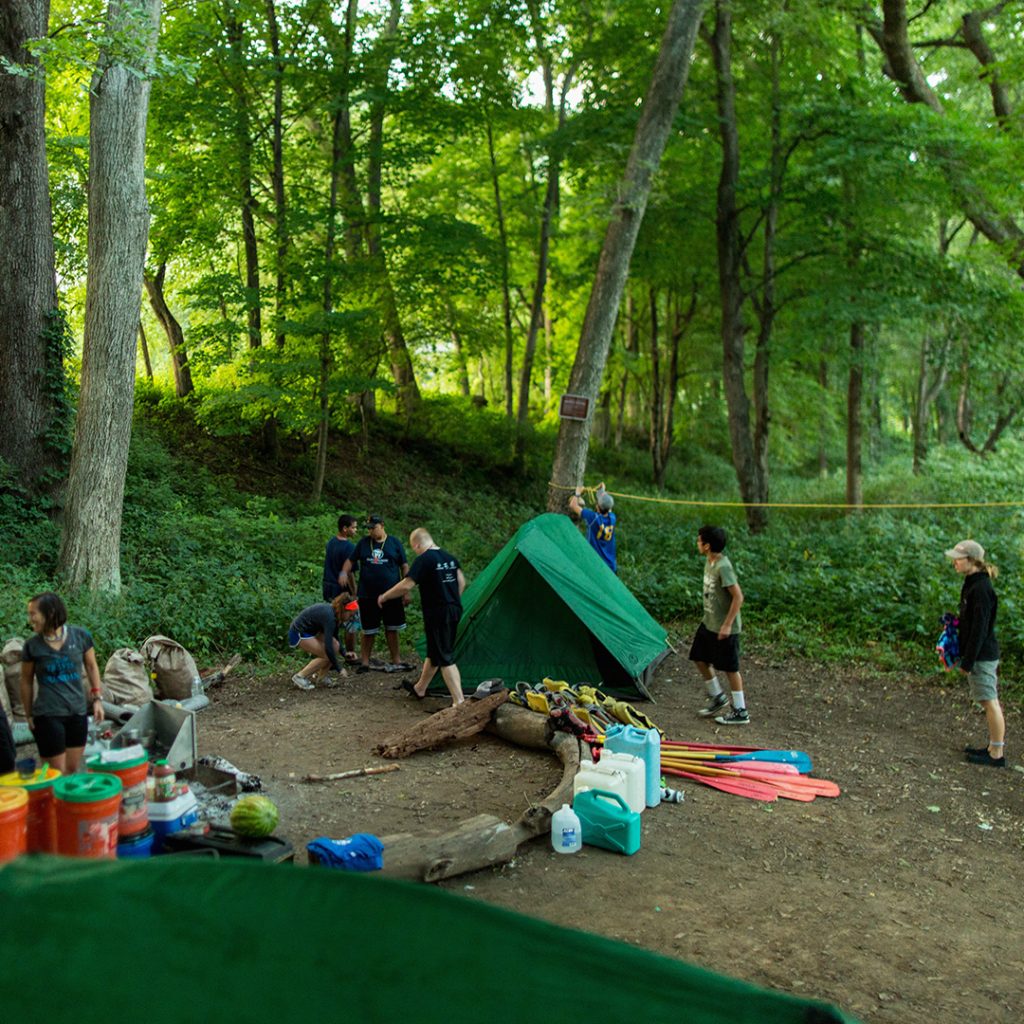
Hanging your food at night while camping is the best way to keep it secure. Photo by Ryan Harris.
And if you don’t hang your food? Please don’t put it in the tent with you. Instead, figure out a way to get it up off the ground where mice, raccoons and other little guys can’t get it. Like skunks. Again, leave it a good distance from where you are sleeping, just in case there’s a bear out there. They’re looking for your food, not you. You don’t want to sleep next to your food.
In One End, out the Other
So, yes, whatever you’ve eaten must come out the other end. Let’s talk about Leaving No Trace, the environmental ethic that guides adventure camping. When you leave your campsite, ideally no one would be able to tell you had been there. And wherever you poop, there should be no telltale sign, either.
When you need to go, take your lightweight trowel and head away from any water source (at least 100 yards). Once out of sight of your buddies, look for the perfect view, and dig a hole about 8” deep, down through the loose top soil and into the mineral soil. Make your deposit there, and cover it well. Use a stick and not the trowel. (You’ll have to carry the trowel, so keep it clean). Along with a good view, you can find a branch to hang onto if you need to stoop while you poop.
Careful “bathroom” habits mean that your deposit will decompose and become part of the soil. If it’s buried well, it’s less likely that critters will dig it up. Use hand sanitizer back in camp to help maintain good hygiene and help your group stay healthy the whole time you’re out.
Note: in some environments, such as deserts, toilet paper and poop don’t break down well. On an Outward Bound course, your Instructor will teach you the best way to deal with human waste on the trail.
And a Good Time Was Had by All
Tune into your senses. Learn Leave No Trace ethics. Practice craftsmanship in your camping skills. And before you know it, camping out in the wilderness feels like home. If you take care, at the end of your expedition, you can say what my compadres said after our early exploits . . . . “And a good time was had by all.”
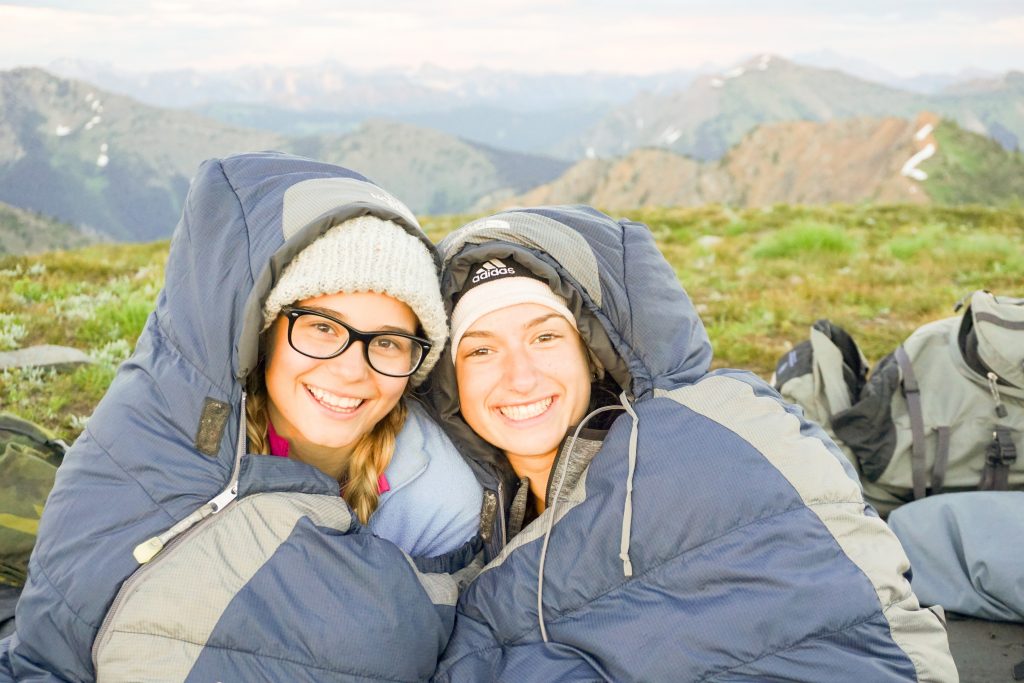
Camping is one of many ways to experience the wilderness. Take the time to learn the basics and you’ll have an outdoor adventure you’ll never forget!
About the Author
CJ Wilson’s career in outdoor education has taken her from Maine to Minnesota, and from the Sierra Nevada to Patagonia. A long-time Outward Bound Instructor, she writes from her base camp in Asheville, NC. When not writing, she might be found working as a ranger in a national park, bicycle touring or hiking her favorite trails near home.
OTHER POSTS YOU MAY LIKE
Read More
Read More
Read More




